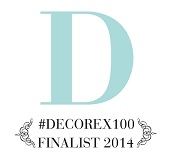How to Add Steam to Your Shower: Q&A With Mrs. Steam
 Tuesday, February 10, 2015 at 3:00AM |
Tuesday, February 10, 2015 at 3:00AM |  Laurie Gorelick Interiors
Laurie Gorelick Interiors A highlight of my experience with BlogtourVegas was the respite afforded us by Mr. Steam after the intensity of three days and four nights spent at ModenusTalks, Las Vegas Market, KBIS and the 2015 New American Home. Mr. Steam, the largest manufacturer of steam boilers in the world, treated us to an afternoon at the luxurious spa at the Aria hotel complete with an education in the art of the hammam, or Turkish bath, with Tala Bath & Body products.


Photos courtesy of vegas.com (left) and modenus.com (right)
After luxuriating in the hot pools with a Tala mud mask and steaming it off in the steam room, I had a beautiful pink glow to my skin. It made me want to repeat this bathing ritual often. But without an at-home spa or health club membership, how could I?
Believe it or not, being able to enjoy the hammam experience is  indeed possible and affordable in your home, explained Martha Orellana, Vice President of Sales and Marketing for Mr. Steam and nicknamed by Blogtourists "Mrs. Steam." I asked Martha some basic questions to help me --and you-- understand how easy it is to install a steam shower in your home.
indeed possible and affordable in your home, explained Martha Orellana, Vice President of Sales and Marketing for Mr. Steam and nicknamed by Blogtourists "Mrs. Steam." I asked Martha some basic questions to help me --and you-- understand how easy it is to install a steam shower in your home.
LG: What are the minimum space requirements for a steam shower in the home?
Martha: Our Steam@Home package can be installed in a space as little as 3 x 3 and 7 feet high.
LG: Maybe that's all you need for the shower. But where would I put the steam generator?
Martha: The smallest steam generator is actually about the size of a briefcase and can be installed in the bathroom vanity, a nearby closet or even a heated attic, as long as it's within 60 feet of the steam enclosure.
LG: Is that it?
Martha: Kinda. The size of the steam generator is tailored to the size of the shower. So for bigger showers, you need a bigger generator.
LG: Some day I hope to redo my Master Bath (Seriously, I still have the builder's fiberglass all-in-one shower unit). What material can I use for the shower surfaces?
Martha:
LG: Now Martha, where I live, the water is very hard. Do I have to do anything with the water if I have a steam shower?
Martha: Yup. The high mineral content in hard water, like calcium, can build up and clog the generator. That will affect the steam output and the life of the generator. You'll need to install some kind of water softening system to pre-treat the water for the steam shower.
LG: Martha, I like clean . . . but I hate to clean. Is there a lot of upkeep involved in maintaining a steam shower?
Martha: Let's talk about the shower first. You'll have to take precautions to avoid the build up of mold or mildew in the shower. Running the exhaust fan while taking a steam and routine cleanings will help with that. But you'd have to do that for a regular shower anyway.
Now for the steam unit, we offer AutoFlush Technology to insure a practically no-maintenance system.
LG: Tell me about AutoFlush.
Martha:
For more information and requirements for installing a residential steam shower, read Mr.Steam's blog.
Disclaimer: Mr.Steam was a sponsor of BlogtourVegas and, together with other sponsors, paid for my Blogtour experience.






































